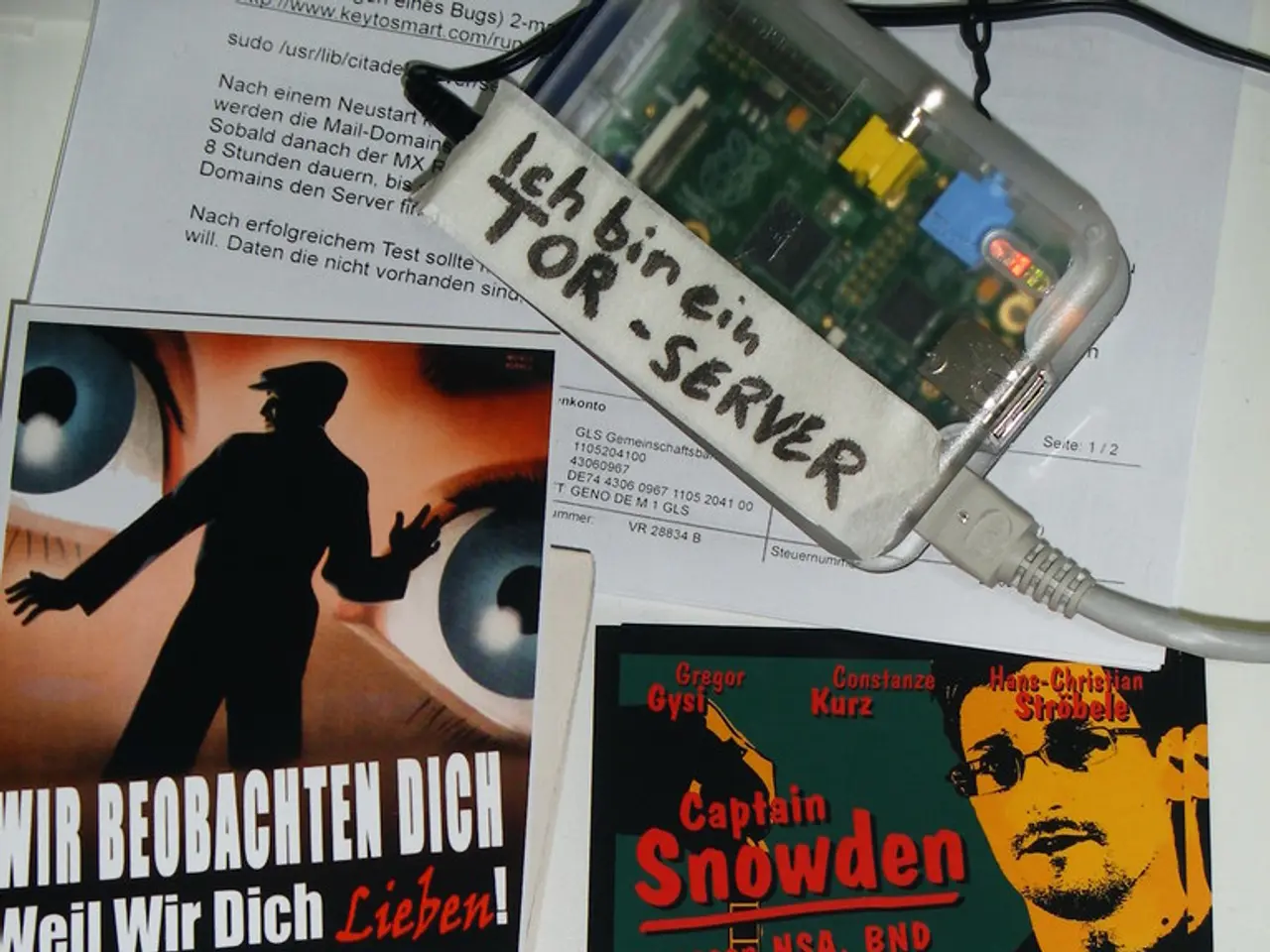Day of Awareness for Monitoring Gadgets
================================================================
In today's interconnected world, privacy is an increasingly elusive concept. Surveillance in public and private spaces is highly widespread and increasingly sophisticated worldwide. This article will explore the common examples of surveillance devices and technologies, their implications, and the ongoing debate surrounding privacy and civil liberties.
Common examples of surveillance devices and technologies include:
- Closed-Circuit Television (CCTV) cameras: Installed extensively in public streets, transport systems, commercial properties, and private residences, CCTV cameras are a ubiquitous part of our daily lives. The UK, for instance, has around 1.9 million CCTV cameras, with numbers continuing to grow globally. Major cities like Chicago and New York have thousands to tens of thousands of cameras monitoring public spaces and transit [4].
- Wide-Area Motion Imagery (WAMI) systems: Airborne surveillance technology using high-resolution cameras mounted on drones, manned aircraft, or aerostats, WAMI systems are capable of monitoring large urban areas with enough detail to track and replay pedestrian and vehicle movements for extended periods. Examples include the ARGUS WAMI system deployed in US cities and border regions, enabling persistent tracking of people and vehicles across wide areas with forensic detail [2].
- Surveillance aerostats like JLENS: Combining radar and optical imaging for mass geo-location tracking of ground vehicles from the air, these systems are used for border security and urban monitoring [2].
In addition to physical surveillance, widespread cyber surveillance and monitoring occur due to growing cybersecurity threats. Organizations increasingly adopt surveillance and monitoring tools in IT environments to detect intrusions and protect sensitive data.
The growth of these technologies reflects expanding security needs but raises ongoing privacy and civil liberties concerns [4]. It is essential to remember that knowing you are constantly watched can change how you behave, censoring thoughts, conversations, and actions out of fear or self-consciousness.
Privacy isn't only for those who are doing something "wrong." It's a foundational human right that protects individual autonomy, dignity, and freedom. Privacy is about having control over your own information, deciding when, how, and to whom you reveal it.
To combat the rise of surveillance, the first step is to cover your cameras on devices. Stay alert to the surveillance landscape around you, make smarter decisions about the gadgets you use, the apps you install, and how you conduct yourself online and offline.
Demand transparency from corporations and governments about their data practices, and support technologies that are designed with user privacy as a priority. Privacy isn't just about avoiding unjust accusations, defamation, or manipulation; it's about preserving our fundamental rights in an increasingly monitored world.
References:
[1] National Vulnerability Database (NVD) - https://nvd.nist.gov/ [2] Electronic Frontier Foundation (EFF) - https://www.eff.org/ [3] Privacy International - https://www.privacyinternational.org/ [4] Surveillance Technology Oversight Project (STOP) - https://stop-mass-surveillance.org/
- In the realm of home-and-garden gadgets, it's crucial to ensure the privacy of smart home devices by regularly updating their security settings.
- As our lifestyles become increasingly intertwined with technology, education-and-self-development resources should prioritize teaching digital literacy, including understanding data-and-cloud-computing security.
- Personal-growth seekers in the field of technology might find interest in exploring the implications of crime-and-justice in the cyber world, particularly concerning cyber surveillance and monitoring.
- Sustainable-living enthusiasts can contribute to privacy preservation by choosing technology companies that prioritize user privacy, thus supporting ethical and eco-friendly technology practices.
- General-news platforms should provide balanced coverage on the ongoing debate about privacy and civil liberties, including the implications of various surveillance devices and technologies like CCTV cameras and WAMI systems.
- Lawmakers involved in crime-and-justice discussions must consider integrating privacy protections in legislations governing the use of surveillance aerostats like JLENS for border security and urban monitoring.




